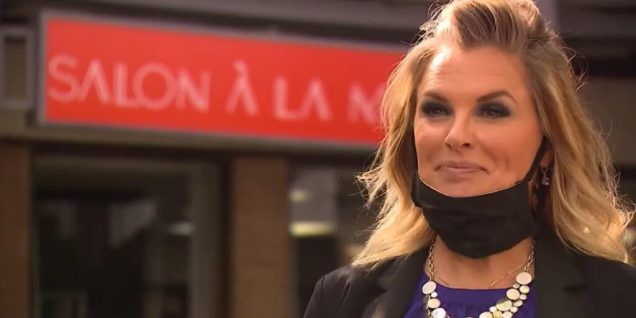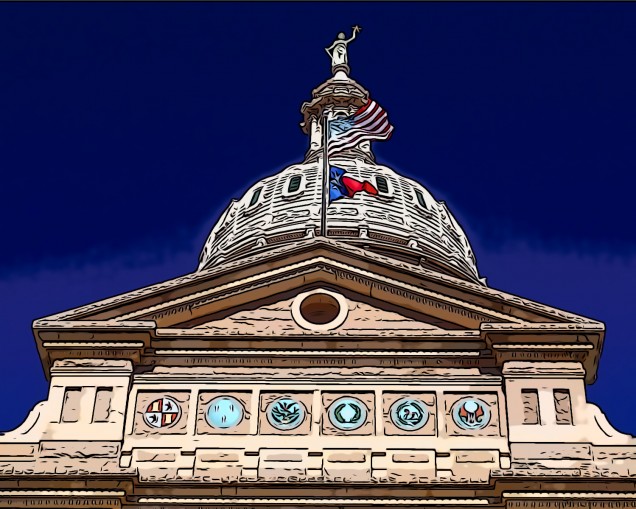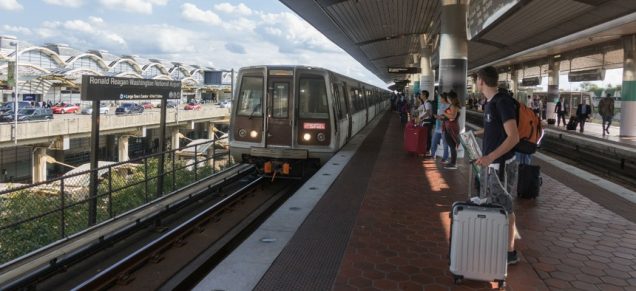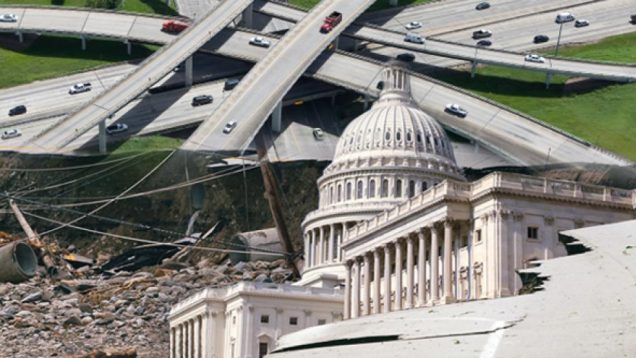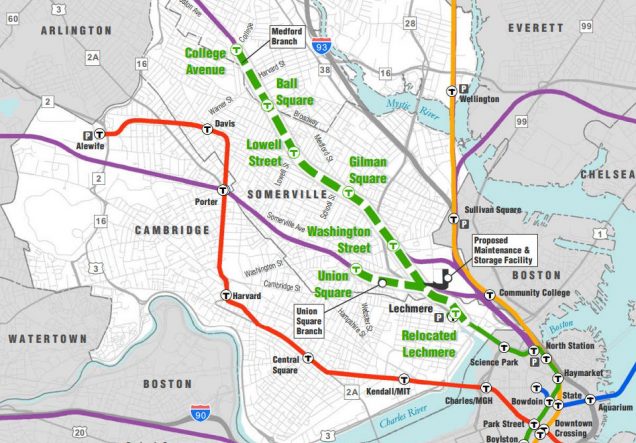Tagged: COVID-19
Telehealth in the Era of COVID-19 and Beyond
Governor Charlie Baker of Massachusetts has recently issued an Order Expanding Access to Telehealth Services and to Protect Health Care Providers. The order, issued in March, is a public health response to the state’s state of emergency due to the Coronavirus or COVID-19 outbreak. Under the order, the Group Insurance Commission, all Commercial Health Insurers, Blue Cross and Blue Shield of Massachusetts, Inc. and health maintenance organizations regulated by the Division of Insurance are required to let all in-network providers deliver clinically appropriate, medically necessary covered services to their members via telehealth, and to mandate reimbursement for these services. The purpose behind the Order is to encourage the use of telehealth in the mainstream of health care provision, as a “legitimate way for clinicians to support and provide services to their patients.”
Blue Cross and Blue Shield of Massachusetts has recorded over half a million patient telehealth visits over a six-week span and that number is only increasing with time. In comparison, the average number of telehealth visits before the COVID-19 pandemic was 5,000. The demand for health care and medical advice without the requirement of an in-person appointment has soared in light of the outbreak that prevents or prohibits people from attending one due to social distancing guidelines. Prior to the crisis posed by the pandemic and before Governor Baker’s order, hospitals and doctors were disincentivized from offering telehealth visits because health insurers did not cover them or would offer a smaller pay as compared to in-person visits. By introducing payment parity between in-person visits and virtual ones, the order expands access to care as current Massachusetts law allows insurers to limit coverage of telehealth services to insurer-approved health care providers in a telemedicine network.
The arrival of the pandemic and state of emergency has pushed for a rapid expansion of the use of technology in the practice of health care. Many of the barriers to access of health care via telemedicine have shifted in a relatively short period of time. In addition to Governor Baker’s order for payment parity, for example, the Governor allowed health care providers outside Massachusetts to obtain emergency licenses to practice within the Commonwealth. Before this and other similar licensure waivers, licensure requirements usually demand that providers be licensed within the state that their patients reside. By waiving this requirement, providers can expand the network of care they are able to provide, and telehealth serves to eliminate the only other barrier–distance.
 An additional movement towards lifting barriers to the implementation of telehealth services is the relaxation of Health Insurance Portability and Accountability Act of 1996 (HIPAA) noncompliance enforcements by Health and Human Services, with the caveat that providers engage in good faith provision of telehealth during the national health emergency posed by the COVID-19 pandemic. HIPAA rules require the protection of privacy and security of health information. The discretionary enforcement order allows health care providers to use any non-public facing audio or video communication products during the COVID-19 public health emergency. This movement attempts to strike a balance between providing access to care during a national health emergency and the privacy protections against the risk of information exposure that are expected by patients in their interactions with their health care providers.
An additional movement towards lifting barriers to the implementation of telehealth services is the relaxation of Health Insurance Portability and Accountability Act of 1996 (HIPAA) noncompliance enforcements by Health and Human Services, with the caveat that providers engage in good faith provision of telehealth during the national health emergency posed by the COVID-19 pandemic. HIPAA rules require the protection of privacy and security of health information. The discretionary enforcement order allows health care providers to use any non-public facing audio or video communication products during the COVID-19 public health emergency. This movement attempts to strike a balance between providing access to care during a national health emergency and the privacy protections against the risk of information exposure that are expected by patients in their interactions with their health care providers.
Another response to the public health crisis has been issued by the United States Drug Enforcement Agency, notifying that practitioners can, in light of the state of emergency, prescribe controlled substances in the absence of an in-person patient encounter. Prior, the prescription of controlled substances via telehealth evaluation was prohibited entirely. Now, prescribers are allowed to write prescriptions so long as: (1) the prescription is issued for a legitimate medical purpose in the course of the practitioner’s usual professional practice; (2) the telemedicine communication is conducted in a real-time, two-way, audio-visual communication system; and (3) the practitioner is acting in accordance to state and federal law.
As of May 2020, the Commonwealth of Massachusetts has initiated a four-phase reopening plan, beginning with hospitals and community health centers. The East Boston Neighborhood Health Center, for example, has indicated that they have an extensive screening process for patients who head over for in-person appointments, including the use of phone-tracking technology to notify staff when the patient has entered the building in an attempt to streamline entrance to examination rooms. The continued need to introduce methods of facilitating social distancing within the hospitals and community health centers indicates that there will be a continued incentive for the provision of telehealth services. The East Boston Neighborhood Health Center reports that, in the first phase of reopening, they expect 25% of visits to be in-person, with 75% of visits to continue to be via telehealth services such as video chat or over the phone.
While some find telehealth services to be inconvenient, due to technological challenges and care that requires more physical examination than can be completed over the phone or by video calling, it seems likely that we will see a blended version of care into the future. Health care practitioners have indicated that, while telemedicine is not a complete substitution of physically seeing and examining patients, being able to speak with a patient in combination with access to the patient’s medical history goes a long way in being able to diagnose and treat health problems. There is a growing sense of certainty that the use of a technology-based health care experience will “become the new normal.”
The natural question is how the legal landscape will have to adjust in response to the shift as society reopens and the balance of the role of technology in a “new normal” becomes more urgent to strike. Many of the barriers to the expansion of telehealth have been rapidly eliminated as a temporary alleviation in direct response to the public health crisis posed by COVID-19. This indicates that the changes are ephemeral; however, with the uncertainty posed by the length of the pandemic and the resulting impact this will have on the use of technology in health care, it seems likely that some of these legal shifts will need to be modified, rather than entirely eliminated, moving forward.
 Zahraa Badat anticipates graduating from Boston University School of Law in May 2021.
Zahraa Badat anticipates graduating from Boston University School of Law in May 2021.
Checks & Balances in a Pandemic
Recently, Shelley Luther, a Dallas based hair salon owner was jailed for refusing to close down her salon. The owner of Salon à la Mode continued operating her business despite a temporary restraining order last week from Dallas County State District Judge Eric Moyé. She continued operating despite a county official’s cease-and-desist letter ordering her to close.
As Luther faced criminal and civil contempt-of-court charges, Judge Moyé told Luther to admit her actions were selfish and wrong and promise that she would follow the law. CBS DFW reported that Luther refused responding,
“I have to disagree with you, sir, when you say that I’m selfish, because feeding my kids is not selfish. I have hair stylists that are going hungry because they’d rather feed their kids. So, sir, if you think the law is more important than kids getting fed, then please go ahead with your decision, but I am not going to shut down the salon.”
This answer did not please Judge Moyé, who immediately sentenced Luther to seven days in jail. Luther was not given an opportunity to go home or even have a phone call, if it hadn’t had been for her boyfriend her adolescent daughter would not have understood why her mother didn’t come home that night.
During the COVID-19 Coronavirus Pandemic, officials have agreed that jail is a breeding ground for the virus. In order to best protect the people, officials have quickly worked to release many non-violent prisoners for the sake of their health. Dallas county specifically released 1,000 inmates to ease crowding in the hopes to slow the spread of COVID-19 at the Dallas County jail. At a time where officials are releasing prisoners, I find it inappropriate to make an example of Luther by throwing her in jail. Not only was this action a risk to her health, but a risk to her family and those exposed to her when she would be released a week later. Additionally, if Luther had been asymptomatic there was a risk that she herself could have brought the virus into the prison.
Furthermore, Dallas County District Attorney John Creuzot announced policy reforms plans to end mass incarceration in Dallas by decreasing the use of excessively high bail amounts, no longer prosecuting most first-time marijuana offenses and not prosecuting thefts of personal items under $750 that are stolen out of necessity. These policy reforms were established to decrease the number of incoming prisoners. Again, at a time where officials are fighting to decrease prison populations, Moyé’s actions neglected to consider the bigger picture. A better alternative would have been a fine for each day she was in operation, with the money allocated to benefiting the community.
Due to public outcry, Gov. Greg Abbott modified his executive orders to remove confinement as a consequence for violating them. He stated:
“Throwing Texans in jail who have had their businesses shut down through no fault of their own is nonsensical, and I will not allow it to happen,” Abbott said in a statement Thursday. “That is why I am modifying my executive orders to ensure confinement is not a punishment for violating an order.”
His change supersedes local orders and Luther was subsequently released. Luther was fined $7,000 for violating a temporary restraining order against reopening her business. However, Lt. Gov. Dan Patrick pledged to step up and pay the fine on her behalf.
The COVID-19 Coronavirus is an unprecedented time in our nation’s history, with legislators unsure how to best regulate protective measures. State legislators have gained an enormous power with COVID-19 Coronavirus. Without a doubt aggressive government intervention has occurred during this health crisis. Historically, pandemics have led to an expansion of the power of the state. Looking towards the future, legislators will have to work to strike a balance between protective regulations and domineering policies.
 Diana Alexandra Martinez anticipates graduating from Boston University School of Law in May 2021.
Diana Alexandra Martinez anticipates graduating from Boston University School of Law in May 2021.
COVID-19’s Economic Impact: Can Amending the Fair Debt Collection Practices Act Help?
COVID-19’s impact on the world has been unsparing: it has taken thousands of loved ones and overburdened healthcare systems. Its economic impact has been no less devastating. Government-mandated shutdowns have forced many small businesses to shut their doors. Those lucky enough to remain open have seen a marked decrease in customers. A McKinsey & Company survey polling small and medium-sized businesses found that 59% of small or medium-sized businesses reported experiencing a “significant” drop in personal and business income. 25% had faced such a precipitous drop that they expected they would have to file for bankruptcy in the coming months. This impact will have a broad effect: these businesses represent 48% of the U.S. economy and employ over 60 million people.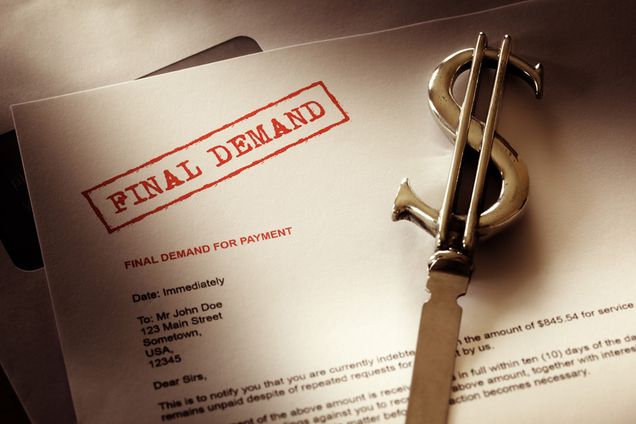
COVID-19 has also been unsparing when it comes to consumers. Not only are those employed by small or mid-sized businesses losing their jobs, but even those working at large international companies are also losing their jobs or facing pay cuts. Self-employed individuals have seen their business opportunities vanish. Right now, because of moratoria on foreclosures, evictions, and debt collection, these issues are looming when the overall economy begins to resume. Without any intervening forces, a wave of evictions, foreclosures, repossessions, and bankruptcies is likely to come.
Currently, little protects consumers and small businesses during emergencies or disasters. While larger institutions are expected to have plans, even participating in stress tests with regulators, small businesses usually do not have such protective measures. Indeed, because so many operate on a thin profit margin, investing in plans to address something that seems unlikely to ever happen may seem like a waste of money. Moreover, consumers are not always going to be financially prepared either. The average American has $8,863 in their savings account. This number decreases with age: for example, young single adults under 34 have an average of $2,729 in savings. There are racial disparities too, with an average of $1,500 for Hispanic and $1,000 for Black savings account balances. (Note that this data does not include the unbanked, which is largely composed of Black and Hispanic households.)
In March 2020, Senator Sherrod Brown (D-Ohio) introduced the Small Business and Consumer Debt Collection Emergency Relief Act of 2020 (the “Act”). The Act amends the Fair Debt Collection Practices Act (“FDCPA”) to provide temporary forbearance periods after “major disasters or emergencies.” The Act could provide much-needed relief to small businesses and American consumers by expanding on current protections currently provided by the FDCPA.
Current Protections
The FDCPA became law in 1978. Its purpose was to crack down on abusive debt collection tactics. In drafting the law, Congress found that abusive debt collection practices led to “personal bankruptcies, to marital instability, to the loss of jobs, and to invasions of individual privacy.” The FDCPA covers several types of consumer debts: mortgage, credit card, student loan, and medical debts, just to name a few. Debts owed by businesses are currently not covered by the FDCPA.
One of the biggest protections afforded under the FDCPA is limiting how and when a debt collector can contact a debtor. Debt collectors cannot harass debtors, misrepresent what can occur if the debtor fails to pay, or contact the debtor in the middle of the night. While the FDCPA is imperfect—consumers regularly report violations—it provides an avenue of recourse and is regularly enforced.
The Act’s Proposals
 The Act seeks to amend the FDCPA in several ways. First, the Act amends section 3 of the FDCPA to restrict debt collection during a national disaster or emergency. The Act defines “national disaster or emergency” two ways: (1) one declared by the president under section 401 of the Robert T. Stafford Disaster Relief and Emergency Assistance Act; or (2) “an emergency involving Federal primary responsibility that is determined to exist by the President” under section 501 of that act. Next, the Act prohibits debt collectors from numerous actions ranging from charging higher fees or interest rates to seizing the property or asset at issue. Moreover, the Act pauses any legal action against the debtor, even if the proceeding began before the disaster was declared. Finally and crucially, the Act extends FDCPA protections during national disasters or emergencies to small businesses.
The Act seeks to amend the FDCPA in several ways. First, the Act amends section 3 of the FDCPA to restrict debt collection during a national disaster or emergency. The Act defines “national disaster or emergency” two ways: (1) one declared by the president under section 401 of the Robert T. Stafford Disaster Relief and Emergency Assistance Act; or (2) “an emergency involving Federal primary responsibility that is determined to exist by the President” under section 501 of that act. Next, the Act prohibits debt collectors from numerous actions ranging from charging higher fees or interest rates to seizing the property or asset at issue. Moreover, the Act pauses any legal action against the debtor, even if the proceeding began before the disaster was declared. Finally and crucially, the Act extends FDCPA protections during national disasters or emergencies to small businesses.
The Act is a way of addressing some of the consumer protection shortcomings of the CARES Act. For example, there is a 120 day moratorium on foreclosures and evictions, but only for those who have federally-backed mortgages, live in buildings financed by federally-backed mortgages, or receive rental funding through a federal program. While this covers a significant number of individuals and homes, about 30% of Americans are left out of this provision. The debt collection moratorium under the Act would extend to those Americans. It also addresses the issue the COVID-19 pandemic has made clear: small businesses suffer when they are forced to shut down, as they may not always have the resources or option to continue operating virtually. Their financial troubles largely came as the result of a forced shutdown. More generally, the Act’s amendments can cover future national emergencies or pandemics.
While this is not an overall solution to COVID-19’s economic impact, it can provide some relief to consumers and small businesses. It may allow people to be more understanding of opening up gradually rather than quickly, too. While it does not solve a reduced or lack of income, having some assurance that the car will not be repossessed or a debt collector will not be regularly calling can provide some much needed relief in what has been a stressful time. Currently, debtors do not have such relief. Despite the pandemic, debt collectors have still been calling consumers. In Massachusetts, the Attorney General’s Office sought to ban debt collection during the height of the pandemic. However, a federal judge ruled against the state’s emergency resolution. FTC guidance is not particularly helpful either: it recommends talking things out with the debt collector and asking that they stop calling. Congress has already done a lot through the CARES Act to help consumers during the pandemic. To further assist them, Congress should pass Senator Brown’s bill.
 Kathryn Buckley anticipates graduating from Boston University School of Law in May 2021.
Kathryn Buckley anticipates graduating from Boston University School of Law in May 2021.
COVID-19 is a Perfect Opportunity to Reinvent America’s Mass Public Transit
As the coronavirus (Covid-19) has swept the globe, its impact on global health has been massive. However, this pandemic is not only wreaking havoc on the world’s physical health, but also its financial health. Throughout March 2020, as governments globally imposed restrictions on movement and on business, stocks plummeted. In response, the Federal Reserve slashed interest rates and has attempted to provide new sources of funding for business. Additionally, the federal government enacted a $2 trillion stimulus package. This package includes direct aid for businesses as well as individuals, in addition to support for the medical industry and other key parts of the economy. However, this bill merely provides a one-time cash infusion for a struggling and increasingly desperate economy. The US approach differs from what other countries have provided their citizens during this crisis. Other methods are more akin to ongoing support rather than a one-time payment. In fact, the UK government, in an attempt to curb unemployment, has promised to subsidize up to 80% of any worker’s salary who is facing unemployment, up to $2,900 a month. Many other countries have followed this model of providing continuing support to workers and businesses in an effort to limit unemployment. This is in contrast to the United States where, even after this stimulus was enacted, unemployment figures in the United States have climbed precipitously. Consequently, there have been discussions in Washington of a large infrastructure spending bill, akin to several New Deal programs, that would create thousands of jobs to help the United States economically recover as the health crisis recedes.
It has been reported that this infrastructure bill could be a multi-trillion dollar project. However, it is not clear that an agreement will be reached. For the duration of the Trump Presidency, infrastructure has been seen as a potential compromise issue that both Democrats and Republicans could support, yet an agreement has been elusive. Earlier this year, House Democrats released a proposal that would direct $760 billion towards rebuilding American highways, airports, and other infrastructure, with $10 billion going towards building community health centers. Additionally, this proposal included $329 billion for transportation systems, including $105 billion for transit agencies and maintenance. However, Trump and Congressional Democrats were not able to agree on a compromise agreement. Now that there is increased political pressure to provide jobs, an infrastructure deal is more likely than ever to occur. When it does, Congress should include vigorous funding specifically for mass transit.
First, the construction of mass transit can achieve the short term goal of the infrastructure bill: to create jobs. In fact, a recent light rail construction project between Durham County and Orange County in North Carolina was projected to create 20,000 jobs at a cost of just $2.5 billion. While it is unlikely that these job returns per investment would hold constant, these numbers suggest that a $1 trillion investment could yield 8,000,000 jobs. This would put a sizeable dent in to projected 20 million unemployment claims that could be filed as a result of the pandemic and subsequent economic downturn.
However, the United States should not throw money at a short term solution, without considering long term objectives as well. Investment in mass transit not only would result in short term jobs, but it would also yield many long term benefits that would impact society for a substantial period of time.
Studies at Harvard University indicate that commuting time is the single strongest factor in predicting the odds of escaping poverty. While this may be a function of poverty inherently being a hard burden to escape and wealthier individuals live near good transit options, this may not be the sole explanation. After housing, transportation is the biggest expense for most Americans, especially those settled along the urban fringe. In fact, 44% of all multifamily section 8 properties in the nation spend on average more than 15% of their income on transportation costs, effectively making these properties unaffordable. Yet increased availability of mass public transit could help solve this issue. Undeniably, mass transit is cheaper than the alternative: owning a car. On average a household can save around $10,000 annually by owning one fewer car and utilizing public transit.
However, American mass transit systems lag behind those of other countries. New York is the only US city where rail network ridership has increased since 2012. North America as a whole only accounts for 3.7 billion of the world’s 53 billion rail passengers. Ridership in Asia increased to 26 billion between 2012 and 2017, Europe accounts for 10 billion riders, and Latin America 6 billion. Further, American cities with popular transit systems are generally located in the north and on the coasts of the country. While many attribute this lack of public transit to America’s sprawl, a look at Canada, an equally car centric country, dispels this theory. Toronto, Montreal, and Vancouver all have buses, rapid transit, and commuter rail systems. Rather, reports have postulated that American mass transit systems have failed to gain steam because the demand for them is not present, and American’s would rather drive. Further, demand could be low because in cost cutting efforts, many bus and rail lines run less than once every 30 minutes. This lack of service restricts people’s lives in such a way that anyone who can drive, will drive.
Therefore, as Congress and the President work out an infrastructure bill in the coming days and weeks, they should invest heavily in mass public transit. Not only will this plan help solve the initial goal of providing jobs to those left unemployed by COVID-19, but it will also provide significant long term benefits to lower income groups. However, this bill must also create a framework to continue to support mass public transit projects. While it is undoubtedly beneficial to build these projects, their long term impact can only be realized if they are funded sufficiently to become a viable and preferable option to cars. Legislators must ensure that this massive expenditure is structured in a way that it can provide lasting change and provide more benefits than a one time influx of cash ever could.
 Gray Louis anticipates graduating from Boston University School of Law in May 2021.
Gray Louis anticipates graduating from Boston University School of Law in May 2021.
Funding the MBTA: Getting Derailed Plans Back on Track
Taking the T
The transit system of Eastern Massachusetts, governed by the Massachusetts Bay Transportation Authority, has been the subject of much ire by residents of Greater Boston for decades, particularly where the subway, or “T,” is concerned. A prime example is last year’s decision to raise fares by 6% despite continual failures in service, such as a recent derailment on the Red Line and power shutdown on the Blue Line. As the oldest subway system in North America, many of the T’s problems stem from decades- or even century-old design decisions which are impractical to redo today. For example, its hub-and-spoke layout emphasizes access to downtown Boston at the expense of ease of travel between the edges of the system.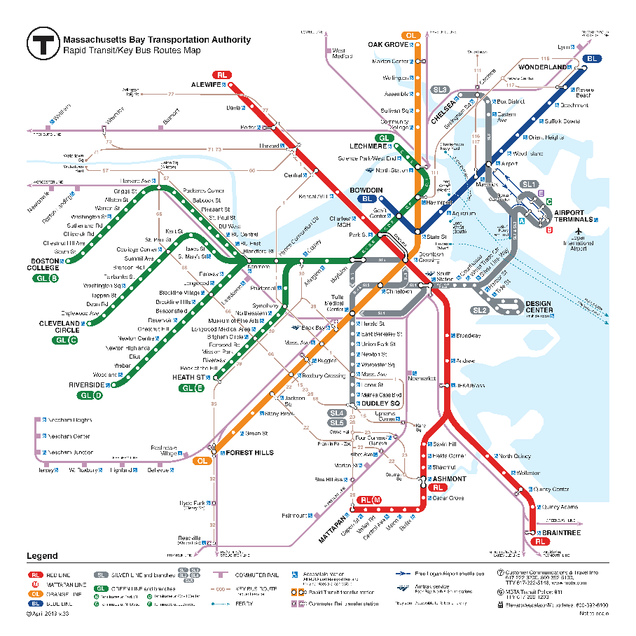
Broke, But Not Broken
However, the primary barrier to the T being the efficient, functional transit system that Boston needs it to be is insufficient funding relative to necessary maintenance and upgrades, not to mention its current debt load. Though the MBTA system as a whole sees more than $2 billion in annual revenue, it still endures annual operating losses of more than $36 million. Significantly, the majority of its revenue does not come from operations, i.e. fares collected, but rather from sales tax and local assessment contributions. For nearly twenty years, a “penny” of all non-meal-and-drink sales tax revenue in Massachusetts has been dedicated to the MBTA budget. Because this source of tax revenue has not grown as anticipated, the MBTA budget has consequentially fallen short of expectations by well over $200 million per year. Meanwhile, costs of new projects continue to balloon. The cost of an upgraded fare collection system, originally budgeted at just over $700 million, has now grown to over $900 million.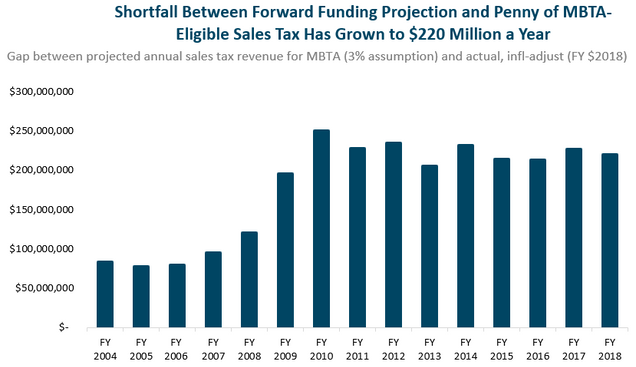
Boston City Councilor Michelle Wu argues that incremental fixes and patching of problems is insufficient; rather, we must invest in the system as a whole with a focus on expanding access. The necessity of serious capital investment became especially apparent after historic blizzards in early 2015 forced a system-wide shutdown. Wu has pointed to Governor Charlie Baker’s reluctance to act as an obstacle to the requisite overhaul the T needs. In response to pressure from her and other transit advocates, last summer Gov. Baker announced plans to accelerate an ongoing five-year, $8 billion capital investment program which kicked off in early 2019. The program aims to provide new rapid-transit buses and train cars, modernize the Red and Orange Lines, and fund a major expansion of the Green Line into underserved areas of Somerville and Medford. The latter, a long-suffering project decades in the making, is an example of the importance of major investment in transit: once complete, the percentage of Somerville residents within walking distance to light rail will increase to 80%, up from a current 20%. Gov. Baker’s acceleration includes more aggressive closures to allow for infrastructure work, more inspections and maintenance, negotiations with contractors, and the creation of a new team of MBTA personnel with the flexibility to work on multiple projects.
Capital Infusions
Even so, continued problems, such as the aforementioned Red Line derailment, prompted Gov. Baker to propose an $18 billion bond bill for transportation throughout the Commonwealth last year, providing money to the entire Massachusetts Department of Transportation, including a $5.7 billion slice for the MBTA. This bill, An Act Authorizing and Accelerating Transportation Investment, most recently received approval, with an amendment, from the House Committee on Bonding, Capital Expenditures and State Assets and moved before the House Committee on Ways and Means in late February, 2020. This Act would fund road and bridge repairs, MBTA upgrades, and the electrification of regional transit services, as well as contribute to big projects such as Cape Cod Canal bridges and the Green Line Extension. The bill also provides support for improving pavement on public roads and building small bridges as well as help for municipalities seeking to make their roads more cyclist- and pedestrian-friendly. Other provisions aim to reduce traffic congestion and greenhouse gas emissions by building bus lanes and working to reduce bottlenecks. Transportation Secretary Stephanie Pollack highlighted the importance of action on other projects which complement improved transit service to maximize the impact of the bill. Such legislation includes Gov. Baker’s proposed Housing Choices Act, which would streamline zoning approval for certain housing projects.
This past January, Gov. Baker also proposed a $135 million budget increase for the MBTA, possibly in response to a scathing December 2019 report by the Safety Review Panel which found deficiencies “in almost every area” of the MBTA system. A major criticism was the recent over-emphasis on capital improvements and not enough support for regular maintenance and safety, with staff being diverted away from the latter. However, it is unclear how exactly the infusion of funding would be spent.
It should be noted that there currently remain $743 million in outstanding senior revenue bond loans to MassDOT, though the Department maintains an A+ rating for borrowing. Though the Act Authorizing and Accelerating Transportation Investment would be funded by further borrowing via bonds, its original version allocated half of all revenue from a potential greenhouse gas cap-and-trade program with other states in the region to public transit, creating a stream of revenue as well as encouraging more fuel-efficient cars. However, that provision was stricken by the Transportation Committee, which argued that they cannot allocate funds to a program that does not yet exist. Lawmakers instead plan to increase fees on transportation network companies and deeds excise taxes.
COVID-19 Crisis
The amendments, including those made earlier by the House Committee on Transportation, include the elimination of $50 million in business tax cuts to encourage employees to work from home and thus reduce traffic congestion, a quaint decision in the midst of the COVID-19 pandemic which has forced millions to work from home anyway. The MBTA has been understandably hit hard, and as of April, ridership on the T was down more than 90% from late February, with bus service down nearly 80%. Anticipated losses this year exceed $213 million due to a 95% plunge in fare collection and drops in revenue from advertising and state sales tax. MassDOT hopes to cover the loss with an expected infusion of $840 million in federal funds through the CARES Act. Meanwhile, the MBTA has reduced service, instituted cleaning and sanitizing regimes for vehicles, and has begun requiring employees and remaining riders to wear face masks.
Needless to say, major investment decisions as of this writing have been put on hold. However, once this crisis has passed, it is critical that Massachusetts act to ensure its transit services remain a functional asset to the people of the Greater Boston Area and beyond.
 Kellen Safreed anticipates graduating from Boston University School of Law in May 2021.
Kellen Safreed anticipates graduating from Boston University School of Law in May 2021.
Emergency Actions Related to Paid Sick Leave Amidst Coronavirus
Coronavirus COVID-19 has affected the United States unlike any other national crisis: schools and higher education alike have shifted to virtual classes, millions of employees are working from home, restaurants and gyms are closed down and travel has stopped abruptly. Americans are being told to social distance for fear of spreading the virus. The future seems unclear, as there is no established end date in sight. The United States Congress attempted to respond accordingly passing legislation quickly in response to this crisis. The legislation has attempted to mitigate issues surrounding paid family leave. At this time, paid sick leave is essential to prevent sick people from being out in society, and workers need the opportunity to stay home or the transmission of Coronavirus (COVID-19) will steadily increase. It is important for the health of the public and of the economy, that Coronavirus (COVID-19) decrease, so the hospitals will no longer be at risk of being overcapacity and society can resume as normal.
Bill H.R.6201 - Families First Coronavirus Response Act was one of the first pieces of legislation aimed to restore the country. This bill was quickly signed into law as Public Law No: 116-127. According to the National Law Review, “the bill [went to the] Senate, on March 16 and [easily passed with few revisions]; President Trump publicly expressed support for the bill and in addition to various public health preparations, the bill includes many provisions that will directly impact employers.
“This [law] responds to the coronavirus outbreak by providing paid sick leave, free coronavirus testing, expanding food assistance, unemployment benefits, and requiring employers to provide additional protections for health care workers. Specifically, the law provides FY2020 supplemental appropriations to the Department of Agriculture (USDA) for nutrition and food assistance programs, including the Special Supplemental Nutrition Program for Women, Infants, and Children (WIC); the Emergency Food Assistance Program (TEFAP); and nutrition assistance grants for U.S. territories.
At this time, paid sick leave is essential to prevent sick people from being out in society. For many Americans unpaid sick leave is not a viable choice. The need to earn money and stay on top of bills often overrides the desire to self-quarantine and get healthy. It is a problem of collective action. However, the severity of COVID-19 shows the importance for Americans to self-quarantine to prevent overwhelming the health care system as shown by this graph:
If sick workers are incentivized to stay at home during an illness as serious as COVID, this will limit the spread of the illness, and hopefully allow Americans to recover at home rather than filling up emergency rooms. Paid sick leave can “flatten the curve,” and although such measures prolong the existence of the virus, the effect on emergency medical systems are more manageable.
The Families First Coronavirus Response Act provides an employee may take up to 12 weeks of paid, job-protected leave if the employee:
- is complying with a requirement or recommendation to quarantine due to coronavirus exposure or symptoms, and cannot work from home
- is caring for an at-risk family member who is quarantining; or
- is caring for the employee’s child if the child’s school or place of care has been closed due to public health emergency.
However, the first 14 days of the leave may be unpaid. Employees may choose to use any accrued paid time off, including vacation and sick leave, to cover the initial 14-day period, but employers may not require them to do so. After the 14-day period, the employer must pay full-time employees not less than two-thirds of the employee’s regular rate for the number of hours the employee would otherwise normally be scheduled. For salaried employees, employers must pay two-thirds of the base salary for the weeks remaining after the initial 14-day period.
Violating the Emergency Paid Sick Time Act will be treated as seriously as a Violation of the Fair Labor Standards Act of 1938 (29 U.S.C. §206) (FLSA), meaning that the employers might be subject to substantial penalties under that Act including, but not limited to liquidated damages and fines, among other penalties. Additionally, the law attempts to expand food assistance and unemployment benefits. The law modifies USDA food assistance and nutrition programs to:
“allow certain waivers to requirements for the school meal programs, suspend the work requirements for the Supplemental Nutrition Assistance Program (SNAP, formerly known as the food stamp program), and allow states to request waivers to provide certain emergency SNAP benefits.” You can access more information about this here.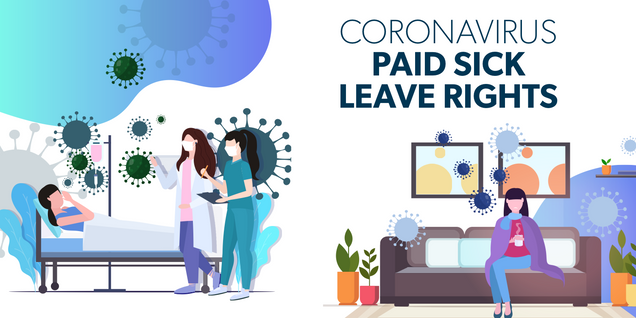
Additionally, the law provides, “$500 million to provide access to nutritious foods to low-income pregnant women or mothers with young children who lose their jobs or are laid off due to the COVID-19 emergency.” This extra effort is very important in order to support American women and children at this time. Moreover, according to the government sources the law also establishes a federal emergency paid leave benefits program. Additionally, the law also aims to expand unemployment benefits and provide grants to states for processing and paying claims, requires employers to provide paid sick leave to employees, establishes requirements for providing coronavirus diagnostic testing at no cost to consumers, and to temporarily increase the Medicaid federal medical assistance percentage (FMAP).
This pandemic has been unprecedented in our nation’s history. U.S. legislators have scrambled to address the COVID crisis and mitigate the damage to both the health of the public and the economy. The Families First Coronavirus Response Act assists multiple facets of life affected by the virus by providing paid sick leave and free coronavirus testing, expanding food assistance and unemployment benefits, and requiring employers to provide additional protections for health care workers. The law does a good job of solving the collective action problem surrounding this. Additionally, it will directly assist the hospitals from becoming over capacitated. Ensuring that infected citizens aren’t compromised or pressured to go to work is a critical component of defeating the spread of this virus.
 Diana Alexandra Martinez anticipates graduating from Boston University School of Law in May 2021.
Diana Alexandra Martinez anticipates graduating from Boston University School of Law in May 2021.


